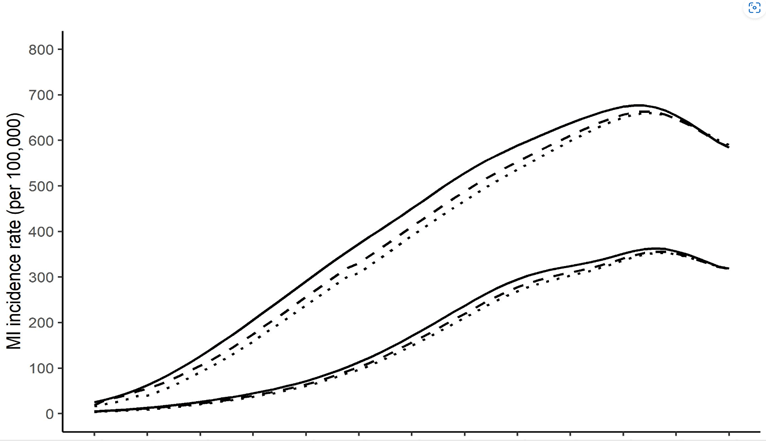Impact of Smoking Reduction Scenarios on the Burden of Myocardial Infarction in the French Population Until 2035
Retour
Photo de Mathew MacQuarrie sur Unsplash
In collaboration with teams from Santé Publique France, the BPH BIOSTAT team is modelling four scenarios for reducing the proportion of smokers aged 18 to 75 in the French population between 2024 and 2035, given that smoking is one of the main risk factors for myocardial infarction
Myocardial infarction is a major public health burden in France, and smoking is one of the main risk factors for this disease, with the particularity of having an immediate cardiovascular impact in smokers.
But what is interesting is that the reduction in cardiovascular risk is effective as soon as smoking is stopped. This makes myocardial infarction a good model for studying the impact of smoking reduction scenarios in France.

Photo de jesse orrico sur Unsplash
In this work, members of the BPH BIOSTAT team modelled four scenarios for reducing the proportion of smokers aged 18-75 in the French population between 2024 and 2035.
→ The first scenario, known as the standard scenario, reconstitutes the current trend in the reduction of smoking in France, a decrease in the proportion of smokers of 1% per year.
→ The second scenario simulates a doubling of the reduction in the number of smokers compared with the previous scenario, or 2% per year.
→ The third scenario applies one of the preliminary objectives of the National Tobacco Control Plan (PNLT), targeting a proportion of smokers at 22% in 2027, a reduction of 10% per year.
→ The fourth and final scenario is the so-called ‘extreme’ scenario, which supposes the complete end of smoking in France by 2024, and enables the maximum possible gain to be estimated. This scenario would make it possible to prevent 103,000 cases of myocardial infarction, 12,800 deaths from myocardial infarction and 653,000 deaths from all causes by 2035.

Estimated Myocardial Infarction incidence rate in the French population by age in 2035 for males (top curves) and females (bottom curves) according to the prevention scenarios: 1% of smokers quit per year in France (solid line), around 9.9% of smokers quitting annually (dashed line), and no smokers from 2024 (dotted line).
Over and above the impact on the number of cases and deaths, a reduction in the prevalence of smoking in the population would result in a reduction in the average age at onset of the disease from 2.8 years to 4.1 years in men and from 1.1 years to 2.0 years in women.
These results confirm the relevance of ambitious targets for reducing smoking.
Kuhn, J., Olié, V., Grave, C., Le Strat, Y., Bonaldi, C., & Joly, P. (2024). Impact of Smoking Reduction Scenarios on the Burden of Myocardial Infarction in the French Population Until 2035. Clinical Epidemiology, 605-616
DOI: 10.2147/CLEP.S440815


